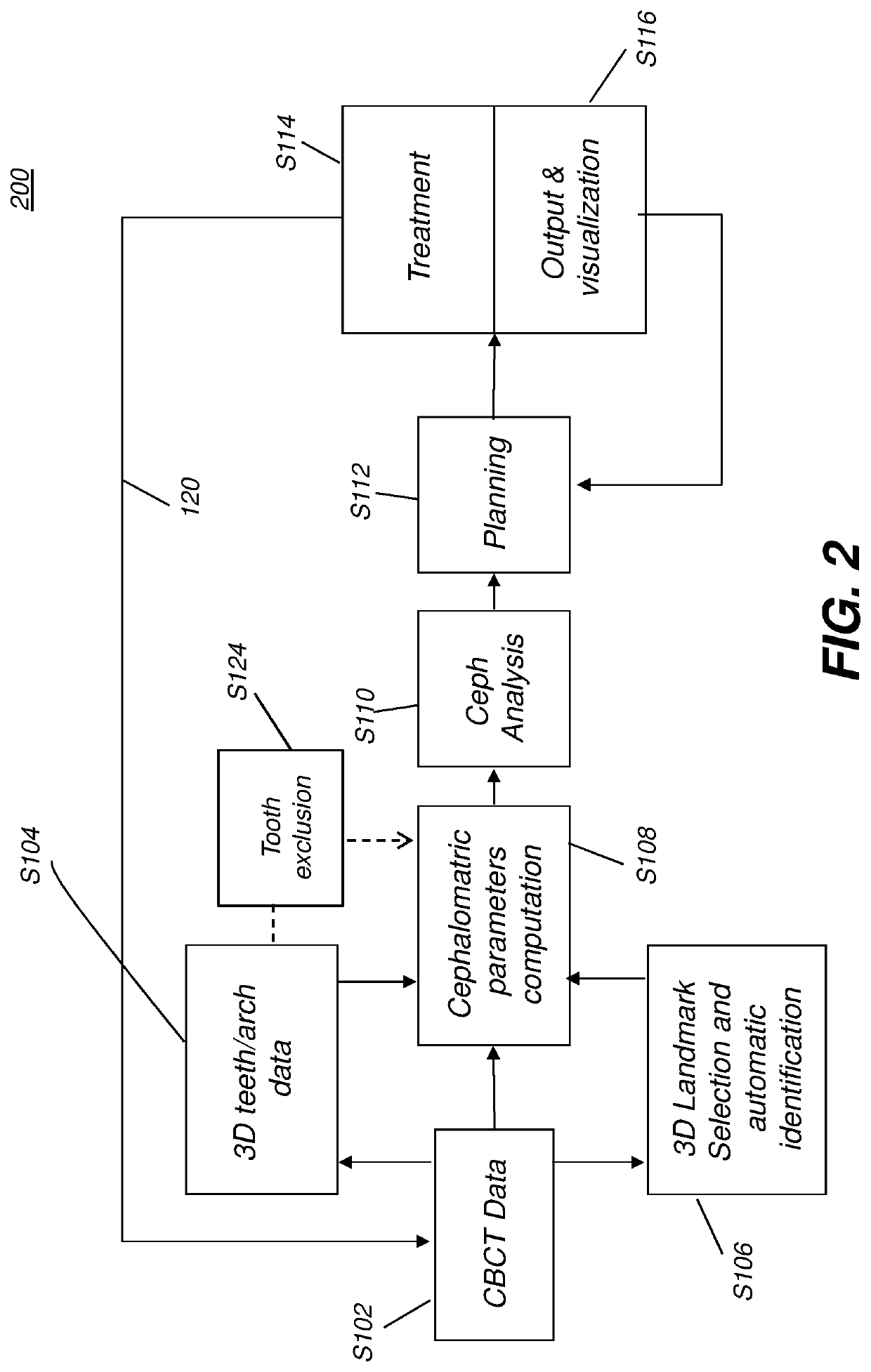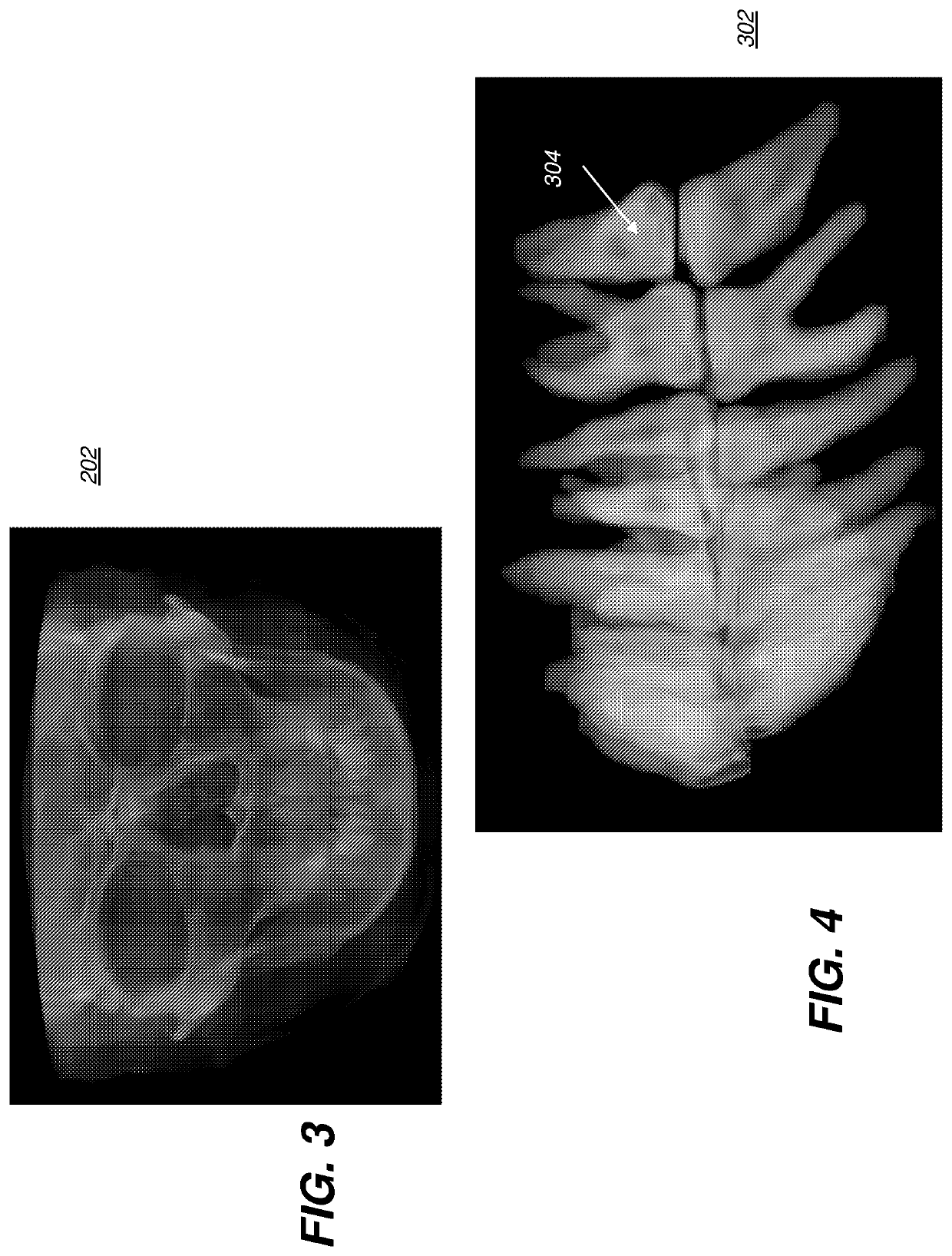Method of optimization in orthodontic applications
a technology of orthodontic applications and optimization methods, applied in dental surgery, manufacturing tools, impression caps, etc., can solve the problems of inability to exhaustively and accurately process, other teeth may have problems, and crowding, so as to achieve the effect of speeding up computation and ensuring accuracy
- Summary
- Abstract
- Description
- Claims
- Application Information
AI Technical Summary
Benefits of technology
Problems solved by technology
Method used
Image
Examples
Embodiment Construction
[0092]In the following detailed description of embodiments of the present disclosure, reference is made to the drawings in which the same reference numerals are assigned to identical elements in successive figures. It should be noted that these figures are provided to illustrate overall functions and relationships according to embodiments of the present invention and are not provided with intent to represent actual size or scale.
[0093]Where they are used, the terms “first”, “second”, “third”, and so on, do not necessarily denote any ordinal or priority relation, but may be used for more clearly distinguishing one element or time interval from another.
[0094]In the context of the present disclosure, the term “image” refers to multi-dimensional image data that is composed of discrete image elements. For 2-D images, the discrete image elements are picture elements, or pixels. For 3-D images, the discrete image elements are volume image elements, or voxels. The term “volume image” is con...
PUM
| Property | Measurement | Unit |
|---|---|---|
| movement vectors | aaaaa | aaaaa |
| cone beam computed tomography | aaaaa | aaaaa |
| intraoral optical scanner | aaaaa | aaaaa |
Abstract
Description
Claims
Application Information
 Login to View More
Login to View More - R&D
- Intellectual Property
- Life Sciences
- Materials
- Tech Scout
- Unparalleled Data Quality
- Higher Quality Content
- 60% Fewer Hallucinations
Browse by: Latest US Patents, China's latest patents, Technical Efficacy Thesaurus, Application Domain, Technology Topic, Popular Technical Reports.
© 2025 PatSnap. All rights reserved.Legal|Privacy policy|Modern Slavery Act Transparency Statement|Sitemap|About US| Contact US: help@patsnap.com



